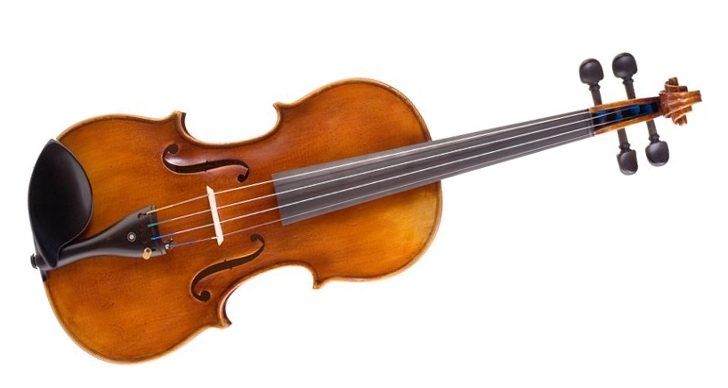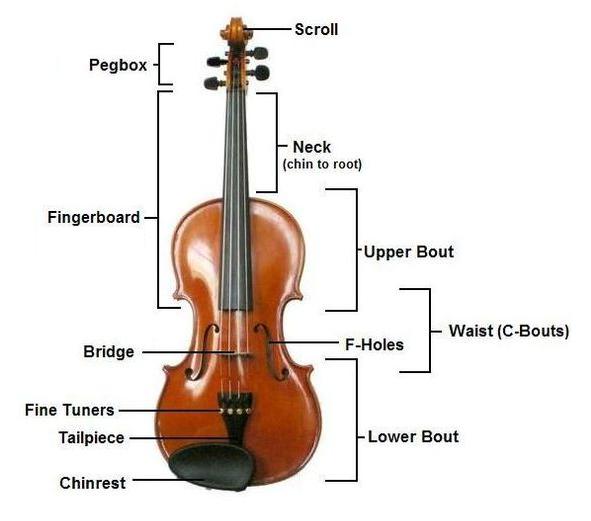Clean your viola with a fine instrument cloth whenever it gets dusty from rosin dust. Otherwise, the strings can get harder to play over time, and it gets harder to clean the instrument the longer your wait in between cleaning.
NEVER set down your viola on a chair, the floor, or anyplace someone may sit or walk. It sounds obvious, but we’ve seen plenty of accidents. Every time you set your viola down, take a second to think about whether it is safe (tables can be okay as a temporary place to set down a viola, but the best place is in its case with at least one of the latches closed so that if someone picks up the case by the handle your viola doesn’t go flying (we’ve seen it happen)). A good idea is to get a viola wall hanger, which creates a very easy and safe place to store your viola and bow.
Always set down the viola string-side up even if it’s zipped up inside your case. Don’t set anything on top of the viola (even if it’s in its case). The reason is that the strings exert a lot of pressure on the instrument through the bridge, and any unnecessary pressure increases the chances of damage.
Temperature – your viola is made of wood. Subjecting it to heat or cold can cause it to go wildly out of tune, or even cause cracks and other serious damage. Make sure that you keep it at a stable temperature as much as possible. Do not expose your viola to direct sunlight for more than a few minutes, even while you’re playing (play under a tent if you have to play outside), and NEVER LEAVE YOUR viola IN YOUR CAR regardless of time of year.
Humidity – like temperature, humidity causes the wood in your viola to expand and contract. Try to keep the humidity stable around your instrument as much as possible. This may require humidifying your home during the winter. An in-case viola humidifier can prevent many of the tuning problems that can result from low humidity.
Change your viola strings every 12 months. You can do this yourself, although you should get an experienced violaist friend or teacher to help you if it is your first time.
Tuning Peg Problems – these are usually caused by (in order of likelihood): humidity variations, improperly wound strings, or poor tuning peg fit. If it is the last of these, taking your viola to a viola shop is the best solution. Tuning peg problems can often be solved using a little Peg Drops solution. Tip: as a beginner violaist, you will find it easier (and less likely to break a string) to only use your viola’s fine tuners unless it is wildly out of tune.
Adjust the Bridge (the piece that holds up the strings) – make sure it stands straight up at 90 degrees and does not lean forward or backward. It can shift over time, so if you notice it leaning, then loosen the strings a bit and straighten it. It is held in place purely by the pressure of the strings. Have an experienced violaist friend or teacher help you with this.
Re-hair your bow every 6-18 months depending upon how frequently you play. Local viola shops can do this for you. It usually costs in the neighborhood of $50.
Viola Bow Care – there is a spot at the tip of viola bows (especially lower end ones), where the bow will shatter if hit just right. Be careful. It’s not a sword, it’s a bow.

Don’t Touch the Horsehair on Your Bow – the oils from your fingers over time can make the hair slippery so that viola rosin no longer sticks. At that point you’ll have to re-hair your bow.
No DIY Repairs – As a beginner violaist, do not attempt viola repairs yourself. If there are any structural or varnish issues where the viola is cracked, scratched, or you suspect it may be otherwise damaged, take it to viola shops to get it looked at. These repairs are much more nuanced than basic carpentry. (NOTE: Once you have a little experience, you can try simple routine maintenance yourself, such as changing the strings or the bridge. But anything more serious (especially if it requires glue or varnish) should really be looked at by a professional or you risk permanently destroying the value of your beginner viola).


